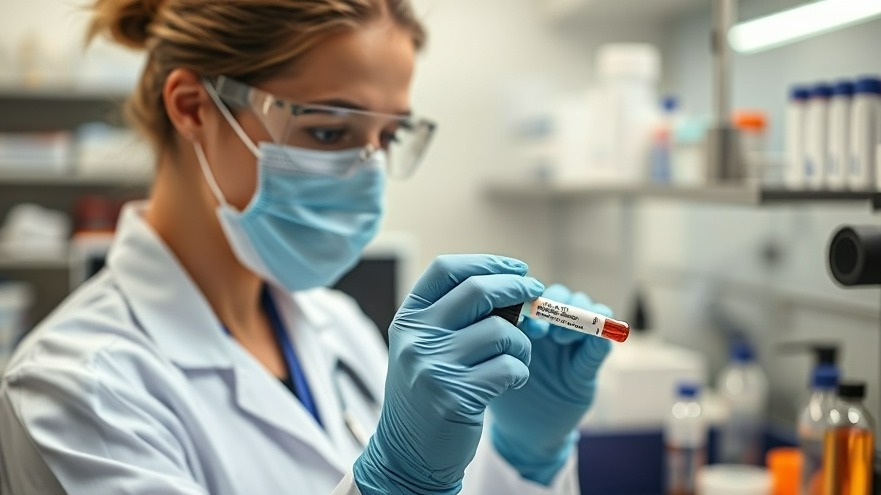
The Breakthrough in HPV Detection
Human papillomavirus (HPV) has long been a serious health concern, particularly in relation to oropharyngeal cancers. With estimates suggesting that HPV is responsible for about 70% of these head and neck cancers in the U.S., earlier detection has never been more crucial. Recent research from Mass General Brigham introduces a significant advancement in diagnostic technology: a liquid biopsy blood test, named HPV-DeepSeek, which boasts unprecedented sensitivity and specificity.
How HPV-DeepSeek Works
Developed by researchers at Mass Eye and Ear, HPV-DeepSeek utilizes whole-genome sequencing to detect fragments of the viral genome circulating in the blood. Unlike traditional liquid biopsy methods that target only limited sections of the virus, this innovative approach can identify nine additional biomarkers, enhancing its diagnostic accuracy. In clinical trials involving 152 patients diagnosed with HPV-related head and neck cancer, HPV-DeepSeek achieved a remarkable 99% sensitivity and specificity, strongly outperforming standard testing methods.
The Implications for Patient Care
The ability to detect HPV-associated head and neck cancers at an early stage can transform patient outcomes. Currently, many patients are diagnosed only after presenting symptoms, which may necessitate more aggressive treatment options. With HPV-DeepSeek, there exists the potential to not only diagnose but also screen asymptomatic patients, paving the way for earlier interventions. Dr. Daniel Faden, principal investigator of the study, emphasizes the importance of this development: "Our findings demonstrate that we can use this approach to diagnose patients more accurately... enabling us to catch and treat their cancers at the earliest stages."
A New Era for Liquid Biopsy Technology
The introduction of HPV-DeepSeek is a promising leap forward in the field of liquid biopsy diagnostics. As technology continues to evolve, the integration of advanced sequencing techniques could pave the way for greater insights into multiple cancer types. Researchers are exploring the test's potential in wider cancer screening applications to catch malignancies long before they manifest clinically. This could revolutionize not only how we detect cancers linked to HPV but potentially many other conditions as well.
Challenges Ahead: Implementation and Accessibility
Despite these advancements, implementing new diagnostic technologies in clinical practice presents challenges. Concerns around cost, accessibility, and training for healthcare professionals must be addressed to ensure that patients receive the benefits of this innovative approach. The transition from research to practice requires collaboration between healthcare practitioners, labs, and regulatory bodies to streamline the process of introducing novel testing methods.
HPV Detection in the Context of Broader Healthcare Trends
As we move towards more personalized medicine, the role of technologies such as HPV-DeepSeek aligns with trends emphasizing the importance of preventative care and early intervention. For concierge health practitioners, staying informed about advances in diagnostic tools is vital. Incorporating these developments can not only improve patient outcomes but enhance your practice's reputation as a leader in healthcare innovation.
Future Directions and Conclusion
The road ahead for HPV-DeepSeek is promising but requires careful consideration of scalability and integration into existing clinical workflows. Practitioners should remain proactive in educating themselves about emerging technologies that can benefit patient care. In an era where early cancer detection can save lives, leveraging advancements like HPV-DeepSeek could make all the difference.
As we await further studies on the usage of HPV-DeepSeek, staying engaged with the research community will be essential for health practitioners aiming to provide the most advanced care possible.
With the possibilities on the horizon for this transformational technology, consultants and healthcare providers alike should prepare to adapt and incorporate these findings into their practices. By embracing innovation, we not only improve our diagnostic capabilities but also positively impact our patients' lives significantly.
 Add Row
Add Row  Add
Add 




Write A Comment